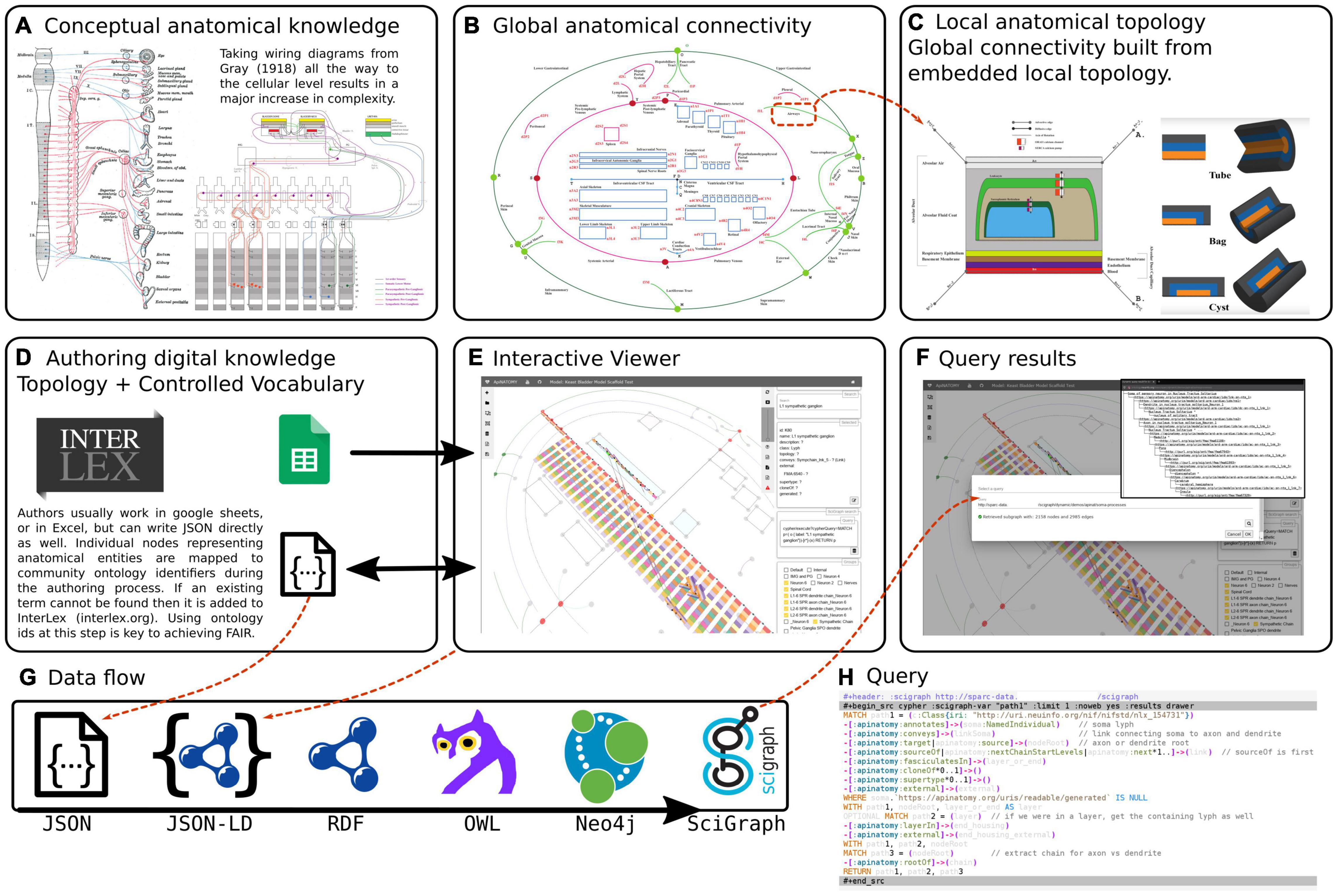Knowledge Representation for Multi-Scale Physiology Route Modeling
ApiNATOMY is a framework for the topological and semantic modeling of physiological processes across multiple biological scales. It combines a knowledge representation (KR) model with a suite of knowledge management (KM) tools that enable experts to build, analyze, and visualize complex route maps of physiology.
The ApiNATOMY model provides an intuitive way for researchers to represent interactions among anatomical entities and processes, translating high-level conceptual descriptions into fully instantiated, computable physiological models. Together, the KR schema and KM tools support the creation of consistent, data-driven visualizations that bridge anatomy and function.

The ApiNATOMY infrastructure supports the full workflow of creating, formalizing, and exploring connectivity models of physiology. It begins with the capture of domain expertise in the form of conceptual wiring diagrams, which are translated into structured representations within the TOO Map global scaffold. These conceptual models are then refined into formal conduit representations that define anatomical routes and process interactions.
Through the ApiNATOMY authoring tools, these models are encoded and transformed into an expanded JSON format suitable for visualization in the graphical viewer. Researchers can then interact with the models, run competency queries to test their consistency, and integrate the data with external systems through. Together, these components form a seamless architecture for building, visualizing, and analyzing complex physiological connectivity.